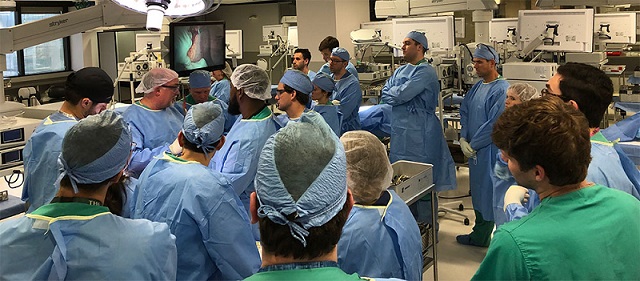Elizabeth Hofheinz, M.P.H., M.Ed.
A team of researchers from Cedars-Sinai Medical Center in Los Angeles wanted to determine the consistency—or inconsistency—in antibiotic-prescribing practices around the U.S. Their work, a substudy of two ongoing multicenter randomized controlled trials known as the Program of Randomized Trials to Evaluate Preoperative antiseptic skin solutions In orthopaedic Trauma (PREP-IT), was titled, “Low Adherence to Recommended Guidelines for Open Fracture Antibiotic Prophylaxis,” and appears in the April 7, 2021 edition of The Journal of Bone and Joint Surgery.
Carol Lin, M.D., M.A. is an Orthopaedic Trauma and Adult Reconstruction surgeon and is Director of the Geriatric Fracture Program and Co-Chair of the Committee on Inclusion, Equity, and Advancement at Cedars-Sinai Medical Center in Los Angeles.
Curiosity sparked by variations in treatment
Dr. Lin told OSN: “While I was a research fellow at Hennepin County Medical Center in Minneapolis, I noticed that the institutional protocol used piperacillin/tazobactam as part of their protocol for antibiotic prophylaxis for open fractures. This was different than what I had been taught throughout residency and sparked an interest over the next several years in what other centers were doing. I’d ask colleagues at meetings what their personal and institutional protocols were and found that there was a surprising variety.”
“This study really wouldn’t have happened were it not for a METRC Emerging Investigators Clinical Research workshop my chairman, Dr. Mark Vrahas, sponsored me to attend at Shock Trauma in June of 2019. I had been considering different ways of studying antibiotic prescribing protocols but didn’t feel that a simple survey would be that illuminating given the generally low and often unrepresentative response rate.”
“At that workshop I learned about a pair of large prospective, randomized multicenter studies called the PREP-IT studies which were studying different skin prep solutions in closed and open fractures. I learned that they had already enrolled more than 1000 open fractures in the study and had collected detailed information on antibiotics as part of the study protocol.”
“Since the choice of prophylactic antibiotics was left up to the individual centers, I thought it would be an ideal opportunity to see what different centers around North America were using for their open fracture prophylaxis.”
Who, what, how?
A total of 1,234 patients were included, with exclusion criteria as follows: initial management at an outside hospital, active infection at the time of injury, terminal injuries, incarceration, or inability to follow up. Demographic and medical characteristics and open fracture characteristics for both the Gustilo classification and the OTA classification were noted. All patients received antibiotics on the day of admission.
“The most commonly prescribed antibiotic regimen was cefazolin monotherapy (53.6%),” wrote the authors. “Among patients with Type-I and Type-II fractures, there was 61.1% compliance with cefazolin monotherapy. In contrast, only 17.2% of patients with Type-III fractures received the recommended cefazolin and aminoglycoside therapy, with an additional 6.7% receiving piperacillin/tazobactam.”
Dr. Lin commented to OSN: “We saw that there is a surprising amount of variety in what different trauma centers are using for their first-line antibiotic prophylaxis in open fractures. For those of us in trauma, the work of Gustilo and Anderson is often considered gospel, so to see how much divergence there was from their original recommendations was really surprising. Even when you considered the broader guidelines laid down by the American College of Surgeons, which focuses more on the type of bacterial coverage rather than specific antibiotics, very few of the most severely injured open fractures are receiving the broad-spectrum coverage I would expect. But you also have to remember that Gustilo and Anderson published their seminal papers 40 years ago now, and a lot has changed both regarding what bacteria are out there in the community and our techniques for limb salvage and reconstruction.”
“Furthermore, most if not all of these centers are high-volume academic trauma centers where a significant portion of extremity trauma research is performed, so if they are moving away from the original guidelines, then maybe we need to re-examine the traditional dogma.”
“I have to really commend Dr. Gerard Slobogean and the PREP-IT team for not only being so open to the study proposal but also being incredibly generous with access to data and statistical/logistical support.”
“I think the next steps in this study can go in two directions: the first is to evaluate what kinds of open fracture prophylaxis are being used in the community, since the PREP-IT centers are all primarily academic centers, and the second is to see what kind of clinical effect this divergence from traditional recommendations may have.”
“Ultimately, I’d love to see a high-quality prospective randomized trial help us answer the question of what the most appropriate protocol should be so we can achieve the best outcomes for these patients.”







